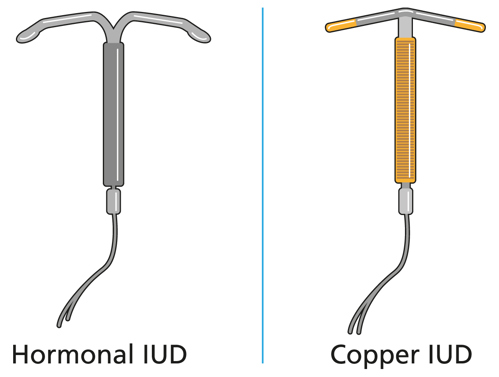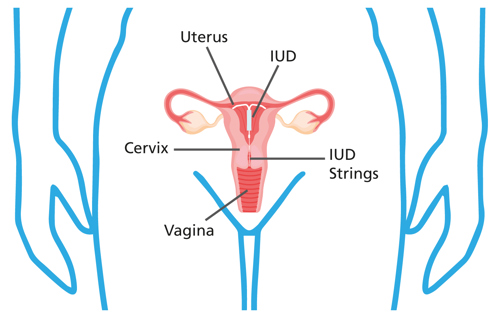Patient information: Intrauterine Device (IUD)
Copper IUD and Hormonal IUD; Benilexa, Levosert, Mirena, Kyleena, Jaydess
Today, you have been fitted with an intrauterine device - Copper IUD (copper Intrauterine Device, hormone free) or a Hormonal IUD (Intrauterine Device, containing the hormone progestogen) for contraception.


Immediately after the device has been inserted, you may notice some mild abdominal discomfort, similar to period pains, which usually settle within a few days. Some people may experience these cramps/pains on and off in the first 1-2 months following insertion. Simple painkillers, such as paracetamol, are usually enough to settle the discomfort.
You may notice a small amount of spotting/bleeding for a few days after the device has been fitted, this is normal and should quickly settle. If an IUD is fitted during a period, the period may be heavier and last slightly longer than usual.
You will be advised to check the threads of your IUD about once per month (eg after your periods, if you have them). The easiest position to check the threads is either squatting or standing with one leg on the side of the bath or chair. Wash your hands, then get into position, place one/two fingers up into your vagina, until you can feel something firm and smooth, like the tip of your nose - this is the cervix. As you do this, gently roll your finger over your cervix and you should feel your threads. If you do not like to check yourself, your partner can check the threads for you.
It is unlikely that your coil will fall out, but if you cannot feel your threads, or if you can feel something hard (like the tip of a matchstick), the device may not be in the correct position. In these circumstances, please abstain from sexual intercourse or use condoms and make an appointment to attend the clinic or see your GP to have the device checked. If you think you may have had sex since the copper/hormonal IUD has moved, you may need emergency contraception. Please seek advice as soon as possible.
When does the coil need changing?
The date at which the coil needs to be removed or changed will be given to you on a card/leaflet after your coil has been inserted. It is your responsibility to attend your GP or local sexual health clinic before this date to have your coil removed or exchanged.
You should return to the clinic for a check if you experience:
- Severe, worsening or persistent pain, fever, bleeding or discharge
- You cannot feel threads or can feel the tip of the device
- Your period is late or very light (with copper IUD only not Hormonal IUD)
- If you are worried about any problems which you think is related to your IUD/IUS you can come back at any time if you have any other questions/concerns.
Additional advice
If you are aged 25 or over, make sure you have regular cervical smears, as part of the National Cervical Screening Programme. Sexual health checks are easy and available via one of our clinics in person or online postal test kit.
